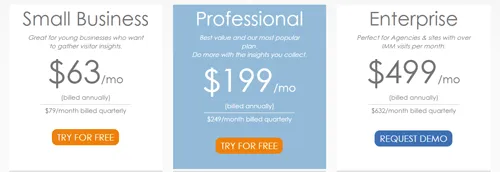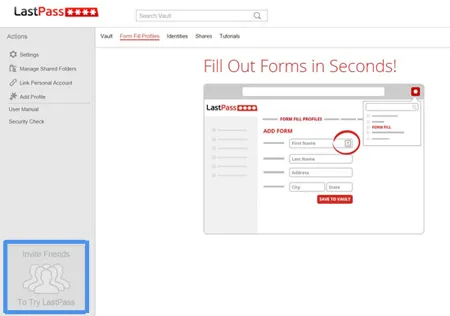How to Boost Your Customer Referrals in 7 Simple Steps

Customer referrals are an essential part of acquiring new and qualified leads for many different industries. Only over the last few years have companies in the web/mobile space started to see the benefits of the channel. So understandably there still is a huge awareness and education initiative needed to bring this channel mainstream.
Recent examples of viral referral programs from companies like Dropbox, PayPal, Airbnb and Uber have helped companies understand the value of this strategy.
The next phase in the evolution of referral programs is the rapid growth of companies like ourselves that make it easier to adopt a referral marketing strategy without sacrificing key engineering resources.
In this article I’ll continue with our education on the many different aspects of building a successful referral program. By going over 7 ways you can boost the performance of your customer referral program.
Understanding Reasons for Natural Word of Mouth
Many companies jump into building a referral program without doing the necessary research to back up their efforts. Customer referral programs won’t give you the results you’re looking for unless you understand why people would share your product in the first place.
We recommend gathering product feedback and referral interest from different subsets of your userbase to understand the different motivations a user has to make a referral for your product. A popular way to test if your company is ready for a referral program is using a Net Promoter Score.
By asking your users to rate their willingness to make a referral for your product on a scale of 1-10, you can find out the true level of product/market-fit you’re achieving. If the data shows that you still have some core feature gaps in your product, you should hold off building a referral program and focus on making a product that people want.
Targeting Users

Not all of your users will have the same motivation for sharing your product. Different pricing tiers give your users access to different features, levels of support and impacts their overall product experience.
A referral program should target users that are getting the true value from your product and have enough domain expertise to make a quality recommendation to their network. Targeting a specific userbase and tailoring the reward to match their referral motivation will make sure your referral program delivers the results you’re looking for.
Using Non-Monetary Rewards

Like most marketing channels, referral programs find ways to re-invent themselves over time. Typically referral programs have only dealt in cash or credit like PayPal’s Give $10 Get $10 program and the many TelCom Give $25 Get $25 programs (highlighted in our 39 referral program examples article)
Then came Dropbox, one of the more recognizable referral programs or “growth hacks” that helped with their viral user growth. They re-invented how we think about rewarding users for making referrals. Dropbox found out that their users are more interested in earning extra storage space instead of a cash incentive. So they designed their program to give out 250MB of extra space for every successful signup.
This drastically lowered their customer acquisition costs. The actual cost of 500MB (250MB each) of free storage for Dropbox is incredibly less when you compare it to the other acquisition channels they’ve used ($288-388) to get a customer. (You can read more about Dropbox’s program in our breakdown here.)
Instant Gratification
An important part of referral program engagement and conversions is the concept of instant gratification. A core motivation in any marketing campaign is to instantly get rewarded for our actions. This same concept can be applied to the world of referral marketing by creating an enticing reward structure that is easily accessible to the customer. For example, your program should reward the customer for their first successful referral instead of making them wait for 2-3 friends to convert.
Program Visibility

Program Visibility is far and away one of the more successful ways to increase awareness for your referral program. If you integrate a call to action into the main navigation, every time a user uses your product or service they will passively become aware of the program.
Contrary to popular belief, these tactics don’t detract from the main product experience. Since it’s a reciprocal gift, many users appreciate the opportunity to give their friends a discount.
In the example above, LastPass places a referral program call to action in the lower left area of their platform. Giving users a constant reminder of the value they get from the product and an easy way to start engaging with the program.
Re-Engagement Loops

An area that many referral programs don’t always look to optimize is their re-engagement process. It’s just natural logic that someone who has made a successful referral is more likely to make another. Unfortunately many in-house programs don’t build in system notifications to re-engage with these referrers and they typically only find out on their monthly invoice if their referral worked or not.
Just like we message our leads when they download our E-books and attend our webinars; we should be messaging our users when they make successful referrals. That re-engagement notification gives your user a positive interaction with your company and will promote further participation with the program. Which is a great way to generate more referrals for your company.
TL;DR
There are many ways you can improve the amount of customer referrals your company earns. Whether it’s through targeting the right user, choosing the right reward or promoting the program consistently. The key to a successful referral program is a dedicated effort from all the key departments of your company with everyone from customer success and marketing to engineering and design playing their part to make sure the referral program is delivering results.
Images courtesy of kibsri/freedigitalphotos.net – bplanet/freedigitalphotos.net

